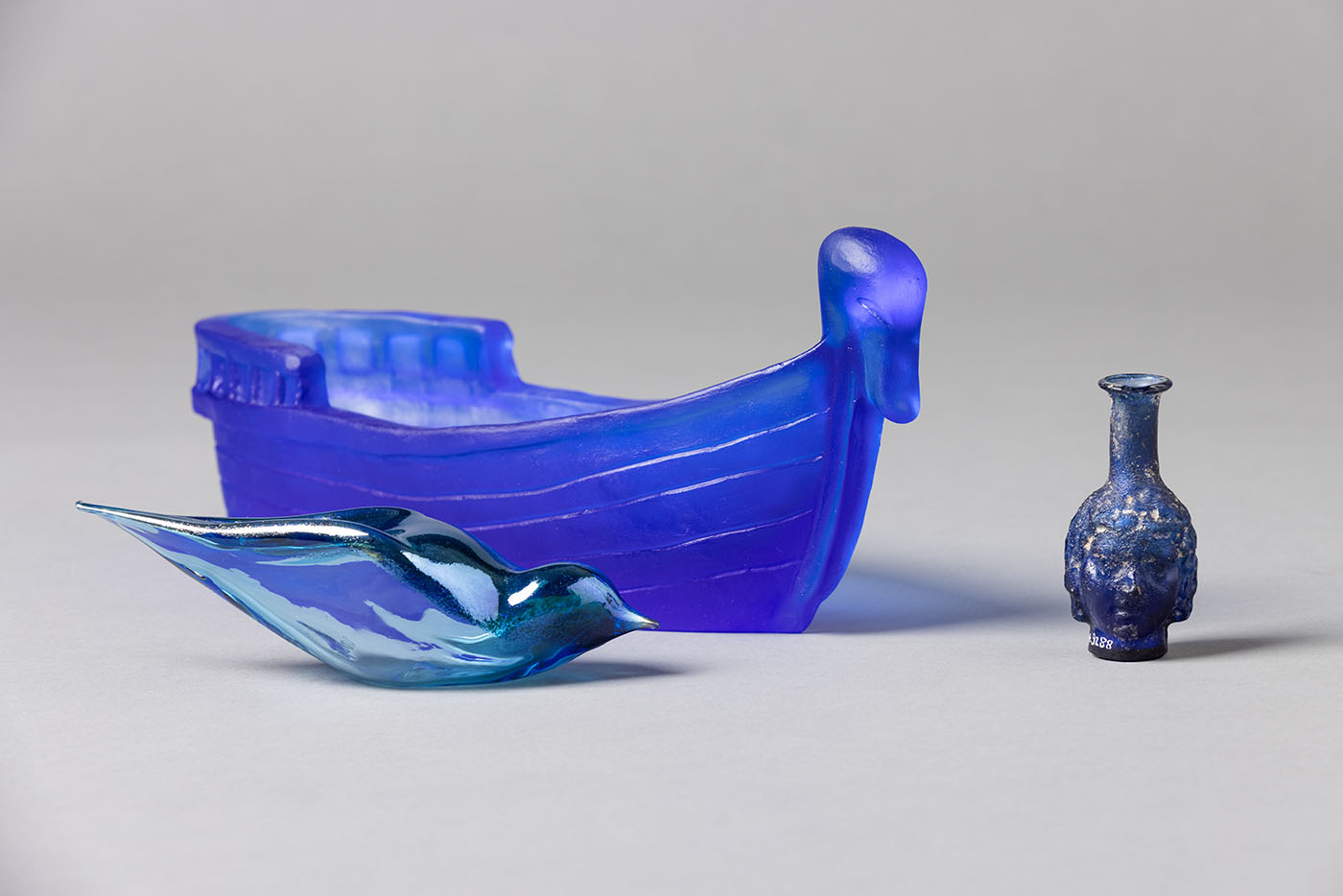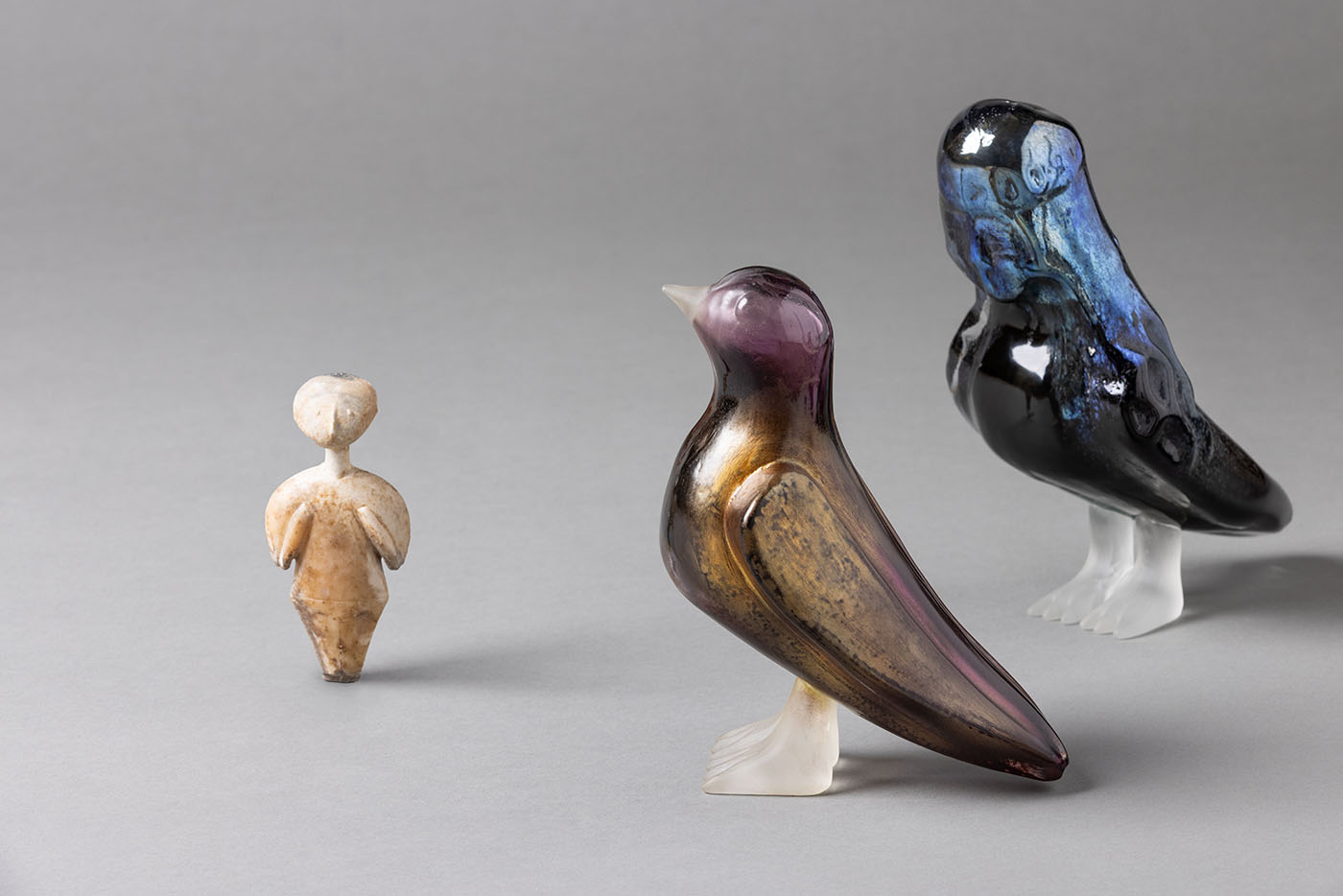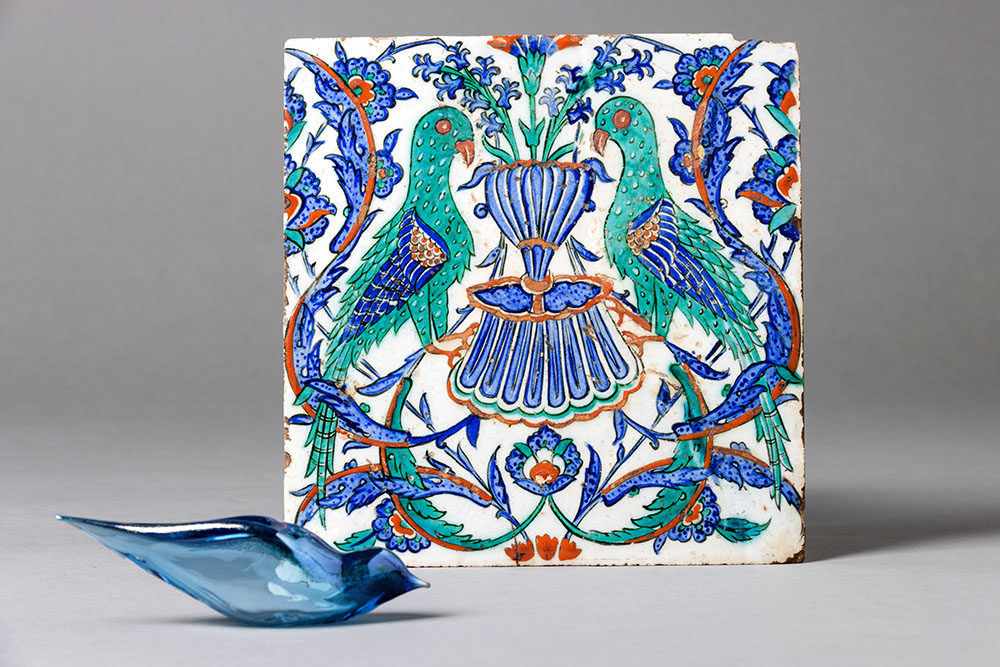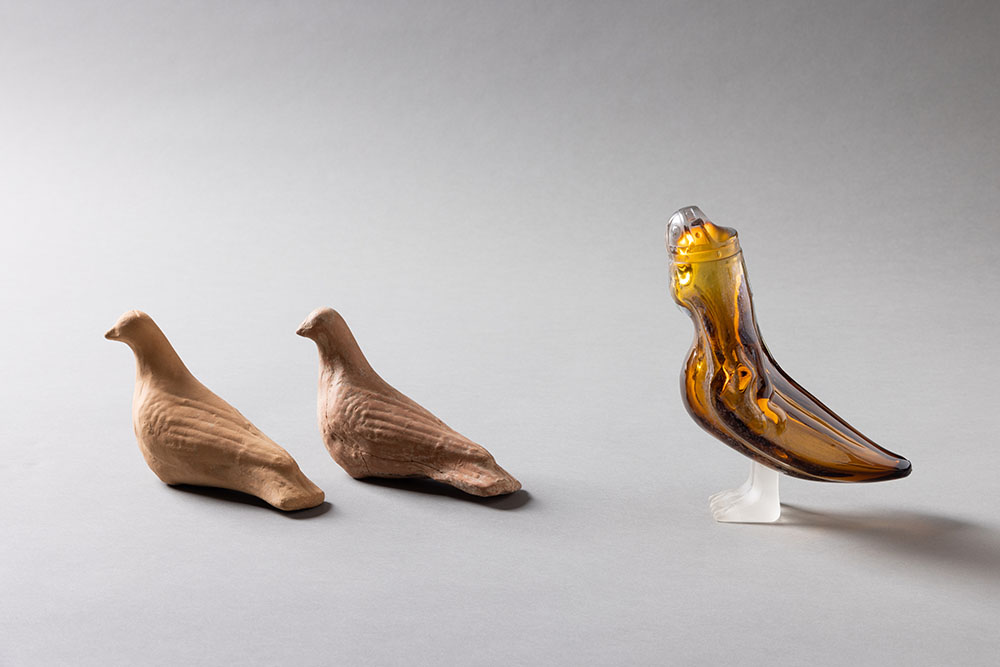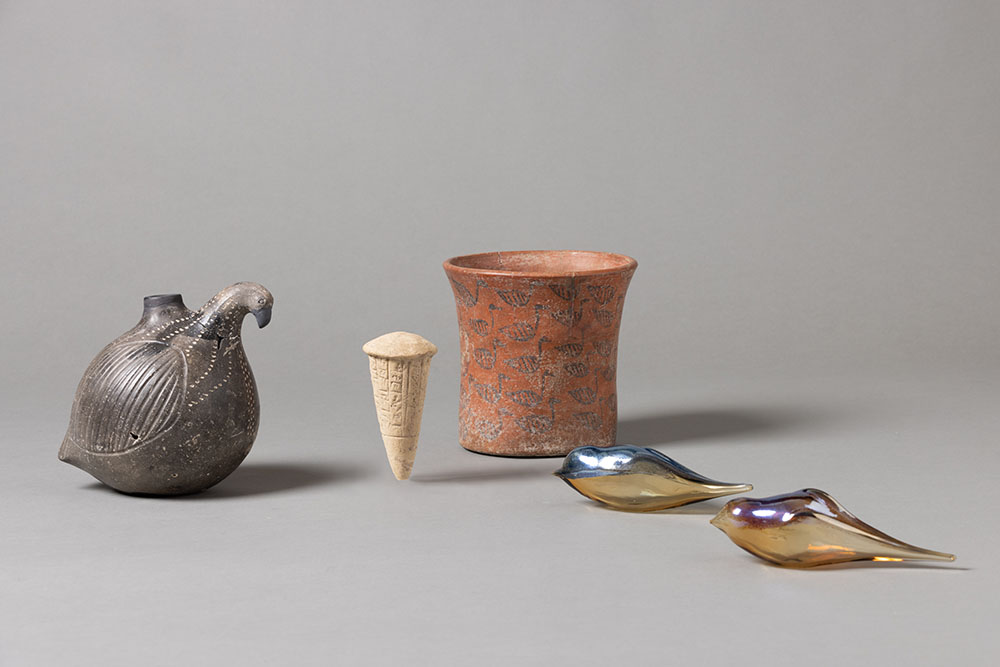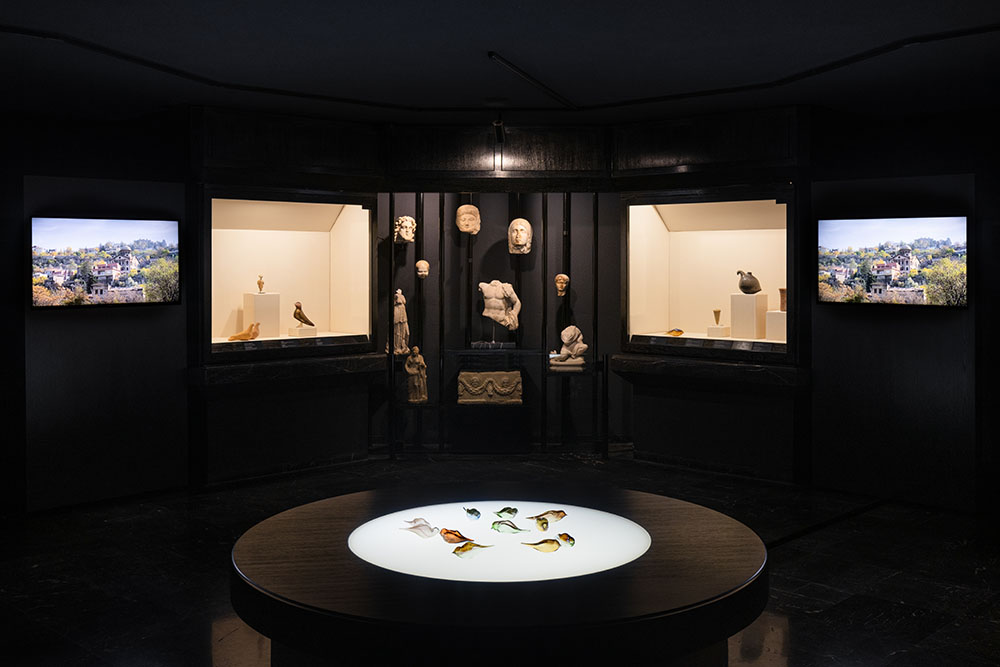Felekşan Onar’s “After Utopia: The Birds” is on view at the Sadberk Hanım Museum in Istanbul through 30 May, 2023, Thursday to Tuesday, 10 am to 5 pm.
Jennifer Hattam
Turkish artist Felekşan Onar is part of a tradition some 4,000 years old. Her craft of glass-working dates back to the Bronze Age, when Mesopotamian artisans are believed to have first adapted stone-cutting techniques to shape beads, seals, and other small objects out of glass. Later came molded glass pieces, like the intricately decorated perfume flasks and pendants from 6th century BC Phoenicia that sit in a vitrine across from their blown-glass successors, an array of Roman-era vials and vases, on a mezzanine floor of the Sadberk Hanım Museum in Istanbul.
Some of Onar’s own glass works have temporarily taken up residence among these ancient antecedents as the museum hosts her solo exhibition, After Utopia: The Birds, alongside its collection of archeological artifacts. The show marks the privately run institution’s first foray into displaying contemporary art.
Inspired by present-day refugees from the war in Syria and communities forcibly relocated en masse across the Aegean Sea a century ago, Onar’s glass sculptures connect thematically and geographically with the older stories of displacement, migration, and cultural transmission and change that are embedded in many of the museum’s artifacts.
This meeting across millennia reflects the fact that “the story we’re telling is one that started many years ago, and will continue for many more,” says Onar. But that story is not just one of continuing artistic traditions or timeless motifs, as striking as the visual resonances are between the ancient and modern works that have been brought into dialogue through her exhibition. Inspired by present-day refugees from the war in Syria and communities forcibly relocated en masse across the Aegean Sea a century ago, Onar’s glass sculptures connect thematically and geographically with the older stories of displacement, migration, and cultural transmission and change that are embedded in many of the museum’s artifacts.
The roughly 7,300 objects in its archeological collection range from the Neolithic period through the Byzantine era in Anatolia, a region where “identities and boundaries and languages were historically constantly shifting and being negotiated,” according to writer and curator Arie Amaya-Akkermans, who collaborated with Onar on the exhibition. (A separate wing of the museum displays its more sizeable Turkish-Islamic art collection, including ceramics, textiles, and calligraphy.)
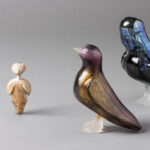
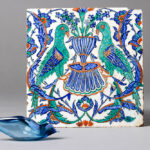
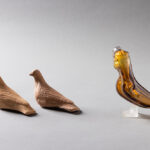
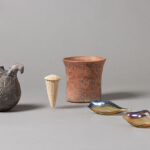
After Utopia: The Birds draws from Onar’s previous work Perched (2017–18), a collection of 99 mold-blown glass swallows — small, wingless, and individually colored. The idea for them had been percolating in her mind ever since a period of turmoil in Turkey, when Istanbul and other cities were shaken by mass protests and terrorist attacks, while also struggling to integrate an influx of millions of Syrian refugees. At the time, it was common to see entire Syrian families sitting on the streets of central Istanbul with their meager belongings, holding up photocopies of their useless passports in a desperate plea for aid.
“I booked some time to work in a friend’s glass studio in Berlin with all these feelings building up inside of me, and a desire to reflect these fears and anxieties in my art,” Onar recalls. On long walks in the German capital, she observed Turkish migrant workers idling on the streets in between jobs, and began to reflect on some memories from her childhood in a rural Aegean town where old Greek houses stood empty but some Greek words lingered in the local vocabulary.
The pieces came together via a novel by the English writer Louis de Bernières that tells the fictionalized story of an Anatolian village torn asunder by the 1923 population exchange between Greece and the then-newly formed Turkish Republic. Under a convention of the Lausanne Peace Treaty, signed following the First World War, a “compulsory exchange” was made of at least 1.5 million people. Those affected were “Turkish nationals of the Greek Orthodox religion established in Turkish territory, and…the Greek nationals of the Moslem religion established in Greek territory,” according to the text of the convention.
The title of de Bernières’ novel, Birds Without Wings, gave Onar the visual language she had been seeking to “reflect on people torn from their roots,” she says.
Groups of the Perched birds were initially exhibited in the Aleppo Room at the Pergamon Museum in Berlin (in 2018) and the Damascus Room at the State Ethnographic Museum in Dresden (in 2020–21). Both rooms are reconstructions of ornate Syrian residential interiors from the 17th to 19th century, their lavishly decorated wooden wall paneling purchased by European collectors during the colonial period in the Middle East and spirited away from their original homes.
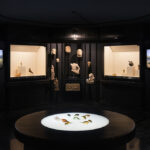
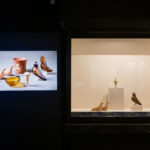
“Felekşan was interested in the interplay in how these birds can travel to Europe much more easily than people,” says Amaya-Akkermans, who is also a contributor to The Markaz Review. “These great institutions with their colonial past really defined the context for the project. When she wanted to show her work in Istanbul after this journey, it was clear to us that it couldn’t go into an institutional white cube space; it had to go somewhere with a charged history. The pieces had become imbued with that meaning.”
At the Sadberk Hanım Museum, the presentation of After Utopia: The Birds begins subtly, with some of Onar’s Perched works sprinkled throughout those of the museum’s sections devoted to the prehistoric and ancient Greek periods. A single pale-turquoise glass swallow sits at the feet of a trio of terracotta figurines who appear to be staring at the new avian arrival in their midst. A pair of the birds perches on a plinth near a finely wrought Bronze Age model of two bulls pulling a wagon. Another duo blends in with a grouping of similarly colored Athenian red-figure pottery.
“Seeing these works together makes you appreciate the beauty of both sets of pieces,” says Müge Arseven, a specialist in classical art and curator of the museum’s antiquities collection. “People usually associate stylization with modern art but ancient people were adept at it too; even early Bronze Age icons have concise, pure, stylized forms.”
The aesthetic and thematic continuities become even more pronounced on the museum’s top floor, where the main exhibition of Onar’s works has been installed. This includes five new glass pieces representing characters in a play written by Amaya-Akkermans as a kind of sequel to the ancient Greek playwright Aristophanes’ satire The Birds. The text of the new play, framed as a conversation between two birds and the mythological hero Odysseus following the imagined collapse of Aristophanes’ bird utopia, incorporates a chorus made up of fragments from songs narrating the stories of exile of the Karamanlides. This largely forgotten Orthodox Christian population, who spoke and wrote in Turkish using the Greek alphabet, lived in Central Anatolia before being uprooted during the 1923 population exchange.
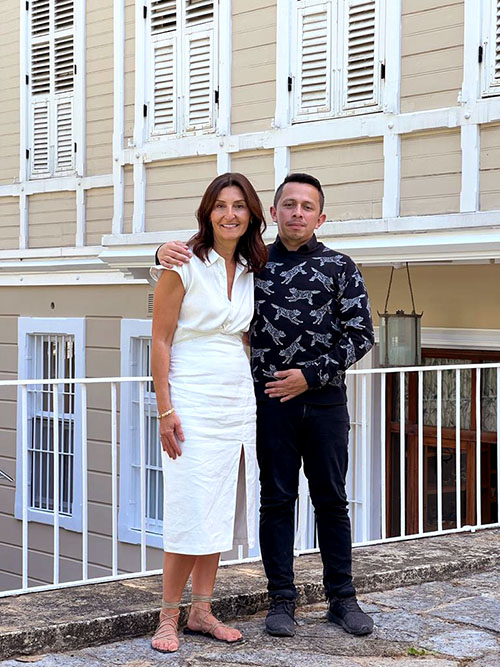
A short film of the play produced for the exhibition incorporates video footage shot in landscapes associated with the Karamanlides. It screens on one wall of the museum in front of a group of Onar’s Perched birds, representing the play’s chorus. The “audience” for the performance is made up of Roman pieces, primarily figures of gods and theater masks, from the Sadberk Hanım collection.
In other vitrines around the room, Onar’s new works are placed in their own conversation with 11 artifacts she and Amaya-Akkermans selected from the museum’s collection, including a 4,000-year-old partridge-shaped rhyton (ritual drinking vessel), a ceremonial terracotta nail with cuneiform inscriptions from the Sumerian period, and an Ottoman ceramic tankard decorated with images of sailing vessels. A boat-shaped, turquoise-glazed ceramic bowl from the Seljuk period decorated with mythological siren figures resonates with Onar’s kiln-cast glass boat in royal blue representing Odysseus, while two terracotta pigeon figurines from the classical period so resemble the form of Onar’s Perched birds that, she says, “they could have been made by my own hand.”
Since first putting it on display in 1988, the museum has built its archeological collection with the goal of creating a succinct but multifaceted history of Anatolia. This has been done in part by acquiring, at foreign auctions, pieces that had potentially been smuggled out of the region in the past. “We don’t like to use the language of ‘bringing them home’ but we are trying our best to put them in a better context,” Arseven says.
One of these key pieces is a small Early Bronze Age marble idol known as a “Stargazer” for its slightly up-tilted head, which appears as part of the After Utopia: The Birds exhibition. Originating in western Anatolia, Stargazers, also called Kilia Idols, are extremely rare and valuable. Only 14 such pieces have been found to date as complete figures; they are scattered throughout museums and private collections around the world. The Sadberk Hanım Museum reportedly acquired its 6-centimeter-tall Stargazer at a Christie’s auction in New York in 2010. Another Stargazer consigned to Christie’s by an American collector fetched $12.7 million in 2017 but the finalization of the sale remains stalled by Turkey’s as-yet unsuccessful campaign to get the figure back.
By conceptually uniting the journeys of the Stargazer, Onar’s birds, the Karamanlides, and other generations of refugees, the exhibition prompts viewers to meditate on issues of identity, belonging, displacement, and the meaning of home. This last is something particularly challenging to define in the case of Anatolia, where so many different civilizations have made their mark over millennia. In some cases, both Greece and Turkey have sought repatriation of the same objects, for example.
Though After Utopia: The Birds is the first contemporary art intervention at the Sadberk Hanım Museum, it is part of a growing interest in archaeology within the art world. In Istanbul alone, Bronze Age artifacts from the Sadberk Hanım collection, including a gold mouth plate and ear plugs thought to have been used in funerary rites, were included alongside contemporary works in the recent group exhibition Rounded by Sleep at Arter. A show at the Yapı Kredi Cultural Center about the ancient city of Sagalassos included new jewelry made by one of the site’s official artists-in-residence. And the Istanbul Archaeological Museums recently exhibited two dozen works inspired by cultural heritage, including virtual-reality installations and 3-D printed sculptures.
Such juxtapositions highlight not only the shared questions and ideas that have fascinated humankind since our species’ beginnings, but also the fact that what we do and create now will one day be part of the past. For our descendants, Onar’s birds may perhaps be the subject of as much interpretation, study, and contestation as the artifacts that surround them in the Sadberk Hanım Museum are to us today.



